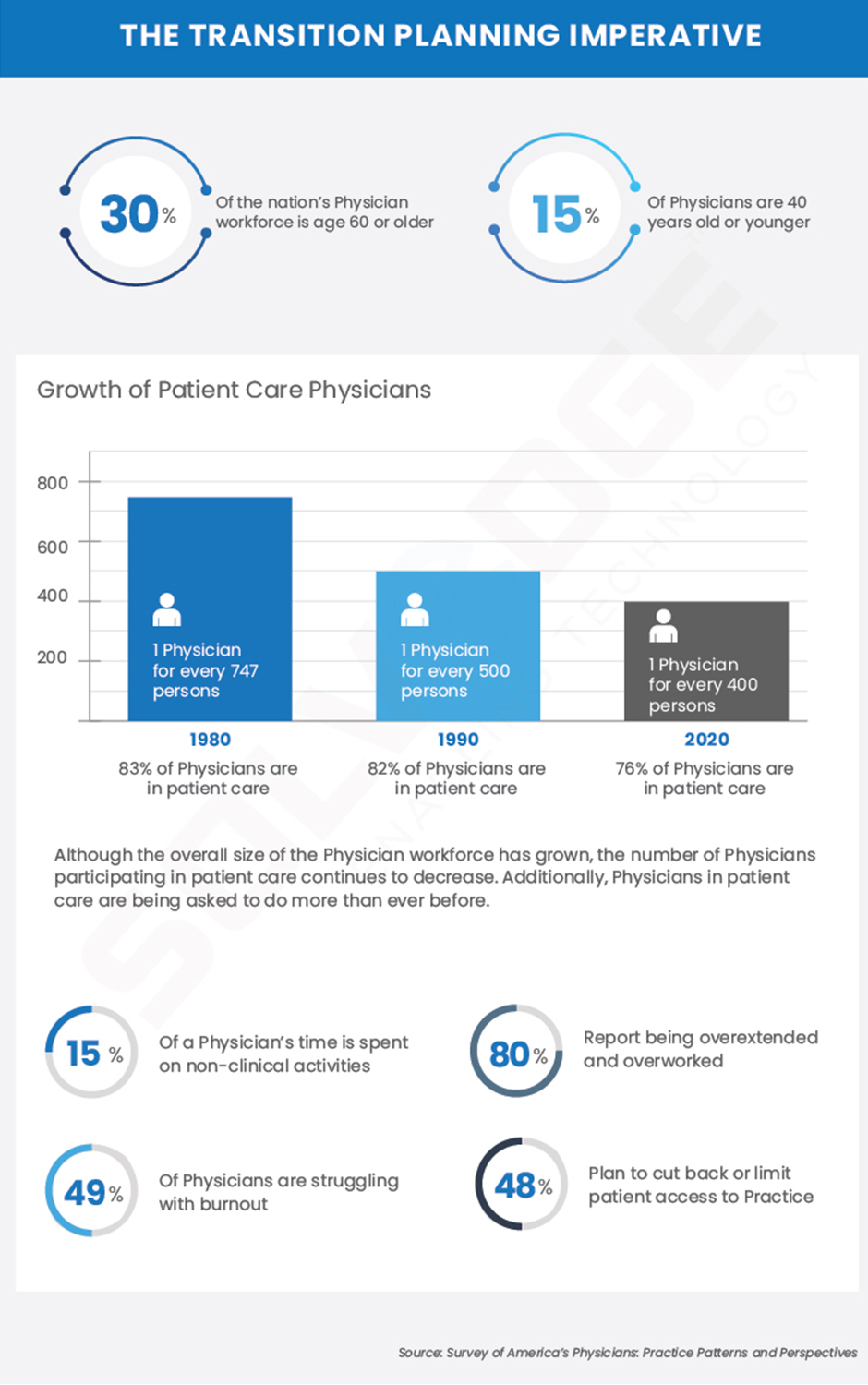Transition Planning for Healthcare
Transition Planning for Healthcare Organizations: The Definitive Guide

Blog
Transition Planning for Healthcare Organizations: The Definitive Guide

Many of the most rapidly aging specialties do not rank among the specialties most frequently requested from national search firms.
A critical segment of the U.S Physician workforce is age 60 or over. Physicians are entering the field. In fact, approximately 32% of the current Physician workforce is over the age of 60, according to data analyzed from Infogroup USA. While this feeds the already expected Physician shortage, it also triggers an urgent need for health systems and Provider groups to assess their Physician transition needs.

Current Physician recruitment priorities nationally may not correspond to looming transition challenges. Many of the most rapidly aging specialties do not rank among the specialties most frequently requested from national search firms.
As Physicians reach their later years of Practice, there are many downstream effects to patient care that require a careful balance to maintain integrity of the overall workforce. Some decisions may be related to practice economics.
Transition-related issues, such as compromised call panels, can result in significant service line and budget considerations.
Physician impairment, Practice transition protocols, and age discrimination issue all require appropriate counsel.
Medical staff bylaws may require changes to policies to adjust for changing demographics and related concerns.
Integrating older private practice physicians into employed models can be challenging and require additional operational support.
Transition planning may require Providers and/or Practices to relocate geographically based on the challenging demographics of many communities.
Aging private Practices may not engage in transition plans, necessitating changes in community dynamics, including hospital group employment.
The aging of experienced Physicians is very real and will become increasingly problematic in the coming years. Preparation starts with proactively planning in order to ensure smooth transitions for Physicians and patients alike. Taking a community-focused approach that addresses service line needs rather than targeting individual Physician replacements allows Physicians to engage in the process while ensuring community needs are met.
From our humble beginnings as a healthcare start-up—to becoming a full-blown healthcare-exclusive digital transformation provider, our journey has been quite a remarkable one. Today, SolvEdge is a leading-edge Healthcare services and solutions provider—trusted by 450+ Hospitals, 3500+ Physicians and millions of patients across the globe.
By leveraging next-gen technologies like AI/ML, Deep Learning, and NLP/Text Mining Algorithms, our stand-alone technology services help streamline digital healthcare initiatives, including Application Development, Advanced Visualizations, Enterprise Workflow Integration and Guided Care Pathway Management. This includes syntheses of Real-World Evidence by curating, integrating, and harmonizing healthcare datasets into a standard data model—or customized to dovetail into client requirements.
The SolvEdge healthcare framework is revolutionary because our approach is based on an absolute dedication to insight-driven analytics on outcomes. Hundreds of healthcare organizations have saved millions of dollars working with SolvEdge digital healthcare technology solutions in maximizing healthcare effectively. To learn more about our healthcare digital transformation solutions, talk to our team.
From our humble beginnings as a healthcare start-up—to becoming a full-blown healthcare-exclusive digital transformation provider, our journey has been quite a remarkable one. Today, SolvEdge is a leading-edge Healthcare services and solutions provider—trusted by 450+ Hospitals, 3500+ Physicians and millions of patients across the globe.